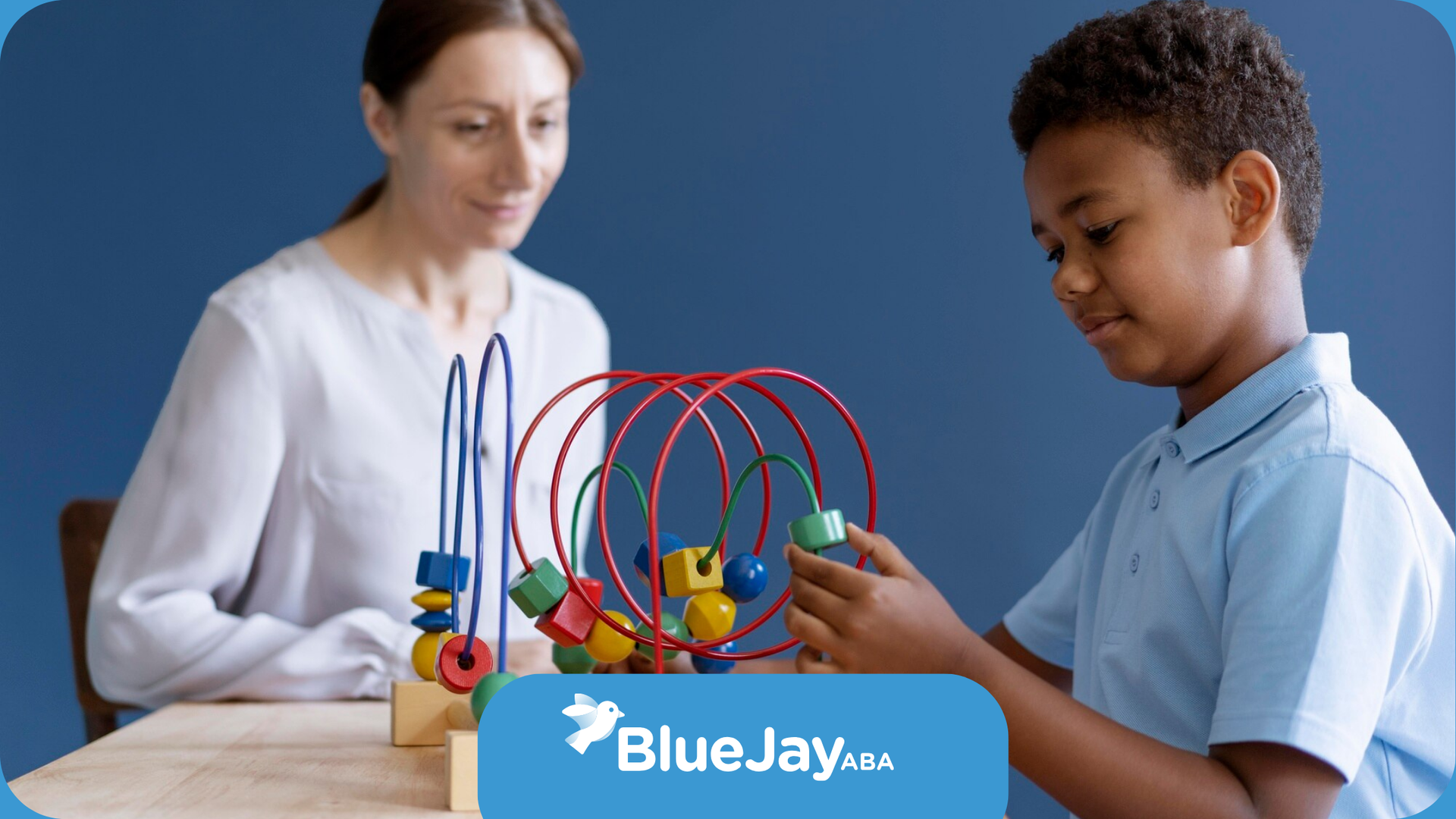Shedding Light on Autism Diagnosis
Getting to Know Autism Spectrum Disorder
What is Autism?
Autism Spectrum Disorder (ASD) is a developmental condition that can make social interaction, communication, and behavior a bit tricky. The CDC says catching it early is key for helping kids thrive. Signs usually show up before age three, but some kids might seem to develop normally and then start showing symptoms between 18 and 24 months.
| Characteristic | Description |
|---|---|
| Social Challenges | Trouble understanding social cues and making friends. |
| Communication Issues | Delayed speech or difficulty with verbal and non-verbal communication. |
| Behavioral Differences | Repetitive actions or intense interests that can affect daily life. |
ASD isn’t one-size-fits-all. Some folks might have learning difficulties, while others might be super smart but find social situations tough. The signs of autism can be all over the map, making diagnosis a bit of a puzzle.
Social Skills and Autism
People with autism often find social settings challenging. They might miss social cues like body language or tone of voice, leading to mix-ups with friends and adults. This can make forming relationships or joining group activities tough.
| Social Skill Area | Challenges |
|---|---|
| Non-Verbal Communication | Struggling with gestures, facial expressions, and eye contact. |
| Peer Interaction | Finding it hard to start or keep conversations, which can lead to feeling left out. |
| Emotional Understanding | Difficulty recognizing and reacting to others’ emotions, affecting empathy. |
These social hurdles can stick around into adulthood, impacting school and work opportunities. Tackling these skills early with specific interventions can make a big difference in social life for those with ASD.
For a deeper dive into ASD, including its diagnosis, it’s best to talk to experts who know their stuff about autism. Getting a handle on autism helps parents, therapists, and teachers give the right support to those on the spectrum.
Diagnosing Autism Spectrum Disorder
Getting a handle on Autism Spectrum Disorder (ASD) is a big deal for parents, teachers, and healthcare folks. A spot-on diagnosis means the right support and help for those with autism.
Why Early Diagnosis Matters
Catching autism early can make a world of difference. Studies show that early spotting and intervention can boost skills and life quality for kids with autism. The CDC says kids should get checked for autism by their doctor at 9 months, 18 months, and 24 or 30 months.
An early diagnosis opens doors to resources and support, like special education and therapy programs. It helps families get the help they need.
| Age | Recommended Screening |
|---|---|
| 9 months | Yes |
| 18 months | Yes |
| 24 or 30 months | Yes |
How Autism is Diagnosed
Diagnosing autism isn’t about blood tests or brain scans. It’s all about watching how someone communicates, interacts, and what they’re interested in. Pediatricians, neurologists, psychiatrists, and psychologists team up to figure it out.
Here are some key tools they use:
| Diagnostic Tool | What It Does |
|---|---|
| Autism Diagnostic Observation Schedule, Second Edition (ADOS™-2) | Looks at behaviors linked to autism. |
| Autism Diagnostic Interview (ADI) | Gathers info from parents about the child’s development. |
These tools help doctors get a clear picture and make the right call on an autism diagnosis. Spotting Autism Spectrum Disorder early can make a big difference down the road, even if not everyone gets diagnosed right away.
For more info on autism and its signs, check out what is autism and signs of autism.
Sensory Challenges and Co-Occurring Conditions
Getting a grip on the sensory challenges and co-occurring conditions tied to Autism Spectrum Disorder (ASD) is key to offering the right support and intervention. Folks with autism often deal with unique sensory processing issues and a bunch of other conditions that can mess with their daily lives.
Sensory Processing Issues
Kids with autism often have sensory problems, reacting differently to sounds, sights, touch, taste, and smells. These sensory quirks can range from mild to wild and might change over time. Some kids might be super sensitive to certain things, causing discomfort or even distress, while others might not react much and seek out intense sensory experiences. Occupational therapists are the heroes here, helping to figure out and tackle these sensory processing and integration issues.
| Sensory Processing Issue | Description |
|---|---|
| Hypersensitivity | Overreaction to sensory stuff (e.g., loud sounds, bright lights) |
| Hyposensitivity | Underreaction or craving sensory input (e.g., touching everything) |
| Sensory Avoidance | Dodging certain sensory experiences (e.g., refusing to wear certain fabrics) |
| Sensory Seeking | Chasing sensory experiences (e.g., spinning, jumping) |
Want to know more about the signs and symptoms of autism? Check out our article on signs of autism.
Common Co-Occurring Conditions
People with autism often deal with several other conditions that can make diagnosis and treatment trickier. One biggie is pica, affecting around 30% of kids with autism. Pica is a compulsive eating disorder where kids munch on non-food items like paint, sand, dirt, or paper, which can lead to health issues like choking, digestive problems, and infections.
Sleep problems are also common among those with ASD. These can be due to gastrointestinal issues, allergies, environmental intolerances, seizures, or medication side effects. Sensory processing difficulties can make sleep problems even worse.
Other common co-occurring conditions include:
| Co-Occurring Condition | Prevalence |
|---|---|
| Epilepsy | About 30% of autistic folks |
| ADHD | Often reported in people with autism |
| Anxiety | Frequently goes hand-in-hand with ASD |
| Depression | Common in individuals with autism |
| Gastrointestinal issues | Regular in kids with ASD |
Knowing about these co-occurring conditions is crucial for giving well-rounded care and support. Early detection and the right intervention can really boost the quality of life for those with autism. For more insights into autism, check out our article on high functioning autism.
Genetic Testing for Autism
Why Genetic Testing Matters
Genetic testing is a game-changer for understanding autism spectrum disorder (ASD). It helps catch things early, making it easier to manage other health issues that often come with autism. This kind of testing can shed light on why someone has autism, point out future health risks, and guide treatments to make life better.
But here’s the kicker: less than half of people diagnosed with autism actually get genetic testing. That’s a big miss, considering it’s recommended for everyone with an autism diagnosis. This testing can give a clearer picture of the condition and any other issues that might be lurking.
| Why Get Genetic Testing for Autism? |
|---|
| Spot other health issues early |
| Find genetic mutations tied to serious problems |
| Get personalized treatment plans |
| Make better decisions for a better life |
New Discoveries in Genetic Research
Recent breakthroughs in genetic research have really opened up our understanding of autism. Scientists have found links between autism and several single-gene and chromosomal disorders like Angelman syndrome, chromosome 15 duplication syndrome, tuberous sclerosis, and Fragile X syndrome (FXS), which is the most common single-gene cause of autism.
Genetic testing is especially important for those who have been diagnosed with ASD but don’t know the cause. It can help identify changes in chromosomes, genes, or proteins to either confirm or rule out genetic conditions like Fragile X syndrome.
As research keeps moving forward, genetic testing will likely become a standard part of diagnosing and treating autism. This will give families the crucial info they need to support their loved ones better. For more details on autism and its signs, check out our pages on what is autism and signs of autism.
Tackling Sleep and Dietary Issues in Autism
Sleep Troubles and Fixes
Sleep problems are common for folks with Autism Spectrum Disorder (ASD). Things like tummy troubles, allergies, sensitivity to the environment, seizures, or even meds can mess with sleep. Sensory issues can also make catching those Z’s tough.
To help with sleep, it’s key to figure out what’s causing the problem. Here are some tips:
| Tip | What to Do |
|---|---|
| Stick to a Routine | Go to bed and wake up at the same time every day to help your body get into a rhythm. |
| Set the Scene | Make the bedroom calm, quiet, and dark. Blackout curtains and white noise machines can be lifesavers. |
| Chill Out Before Bed | Do relaxing stuff like reading or meditating to wind down. |
| Watch What You Eat | Skip caffeine and heavy meals in the evening to help you fall asleep easier. |
| Get Professional Help | An occupational therapist can offer strategies to tackle sensory issues that mess with sleep. |
Food Issues and Pica
Diet can be a big deal for people with autism. One major issue is pica, where someone eats non-food items like paint, dirt, or paper. About 30% of kids with autism deal with moderate to severe pica, which can cause serious health problems like choking, digestive issues, and infections.
Here’s how to handle food concerns and pica:
| Tip | What to Do |
|---|---|
| Check Nutrition | Make sure the diet meets all nutritional needs. |
| Behavior Strategies | Use techniques to discourage pica, like redirecting attention or offering safe alternatives. |
| Get Expert Advice | A dietitian or nutritionist can help create a balanced diet tailored to individual needs. |
| Sensory Therapy | Occupational therapists can help with sensory issues that might lead to pica. |
Understanding and addressing these needs can make a huge difference in the lives of people with autism. For more info, check out our resources on autism spectrum disorder and what is autism.
Supporting Folks with Autism
Helping people with autism spectrum disorder (ASD) means using smart teaching methods and tapping into community resources. These steps can make a big difference in the lives of those with autism and their families.
Smart Teaching Methods
Getting an early start is key for kids with autism. Early intervention can really boost their skills and overall well-being. Here are some ways to support kids with autism in school:
| Method | What It Does |
|---|---|
| Individualized Education Plan (IEP) | A custom plan that sets specific goals and accommodations for the child. |
| Applied Behavior Analysis (ABA) | A structured method that focuses on changing behavior and building skills through rewards. |
| Visual Supports | Using things like schedules, charts, and pictures to help with understanding and communication. |
| Sensory Integration Techniques | Activities that help manage sensory issues. |
| Social Skills Training | Programs to improve social interactions and communication. |
Occupational therapists can also help by addressing sensory issues, making the learning environment better for kids with autism.
Community Resources and Support
Getting help from the community is super important for families dealing with autism. There are many organizations and support groups that offer valuable info and assistance. Here are some key resources:
| Resource | What It Offers |
|---|---|
| Autism Society | Info on autism, local support groups, and advocacy. |
| Child Study Center at Hassenfeld Children’s Hospital | Expert evaluations and tailored assessments for kids. |
| Local Support Groups | A place for families to share experiences and resources. |
| Educational Workshops | Training and workshops for parents, teachers, and professionals to better understand autism and effective strategies. |
Besides educational and community resources, dealing with specific issues like sleep problems is crucial. Sleep troubles are common in people with autism and can be caused by things like gut issues and sensory problems. By using available resources and smart strategies, families can create a supportive environment that helps those with autism grow and thrive.
For more info on autism, check out our articles on autism spectrum disorder and what is autism.
Need Assistance?
We’re Here to Help
Our expert team is ready to support your child’s development and well-being.
We are committed to offering tailored ABA therapy solutions that promote growth.
Contact us today for Professional ABA Therapy.
Related Posts
MENU
GET IN TOUCH
STAY CONNECTED
Join our newsletter and find out more
NewsletterFooter
We will get back to you as soon as possible
Please try again later








